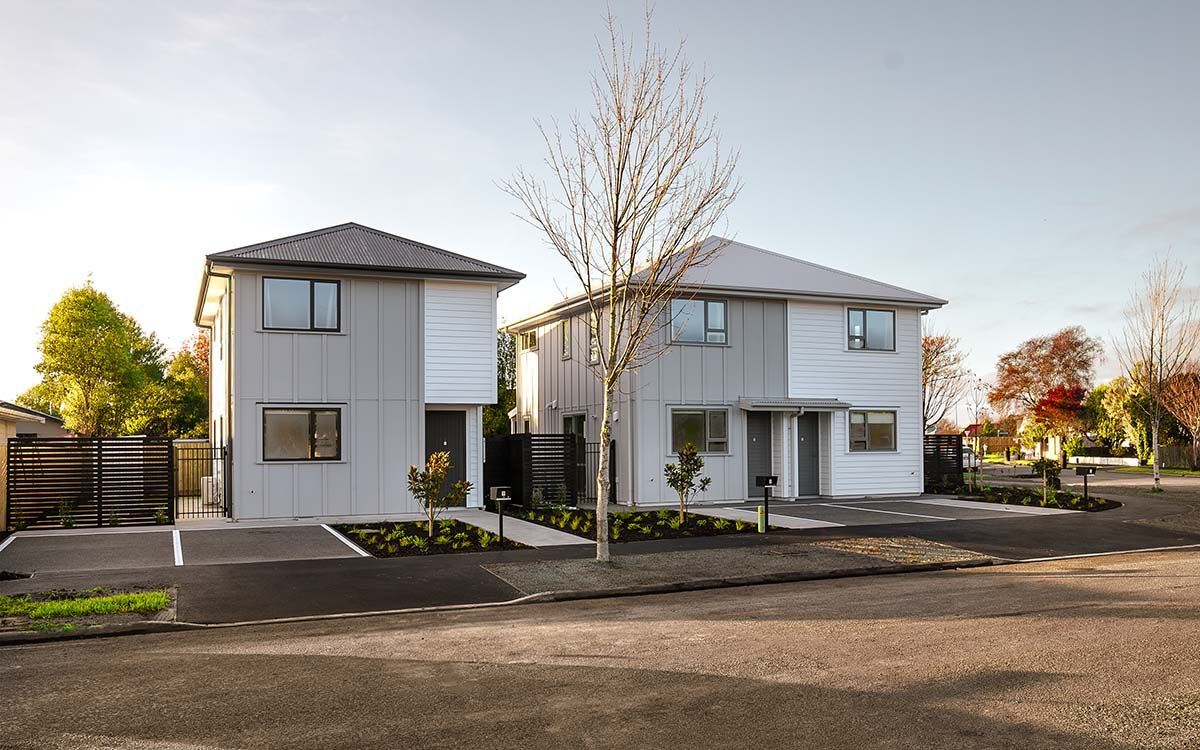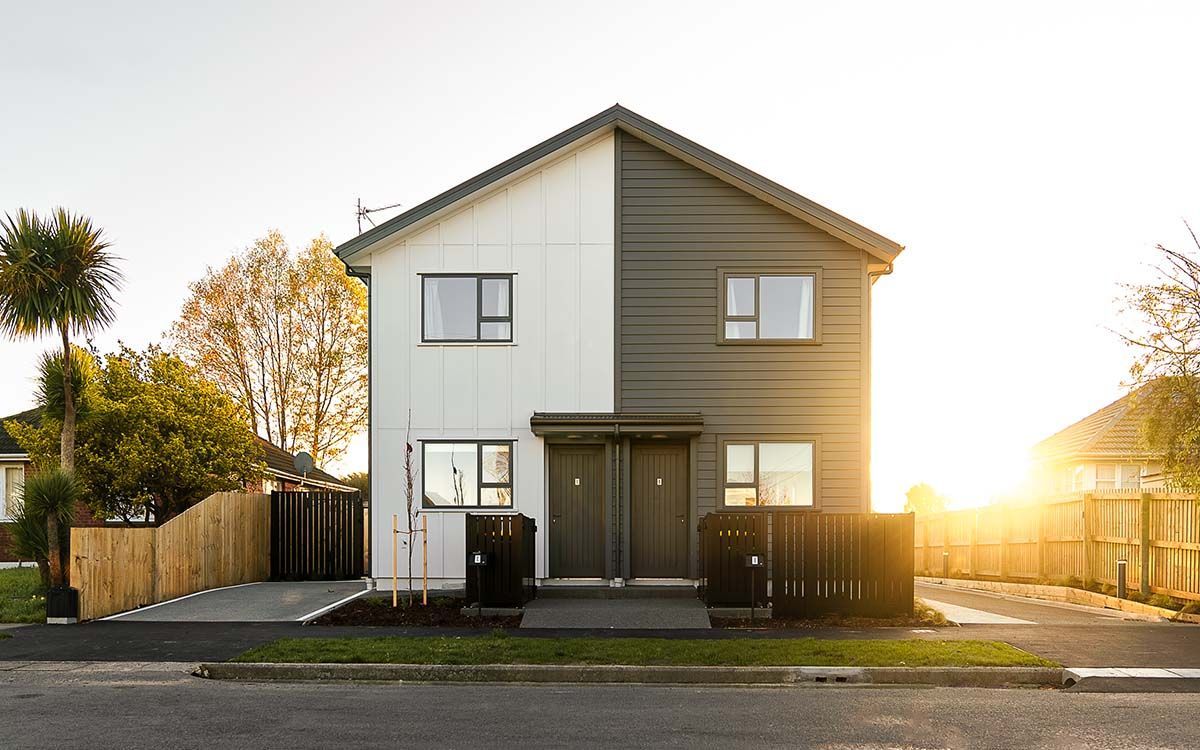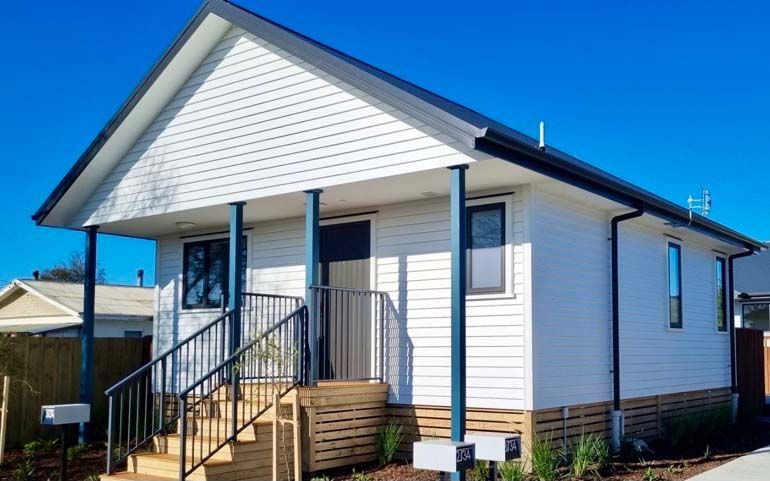With the biggest public build program in decades and widely acknowledged sector challenges, NZ Government housing agency,
Kāinga Ora, knew they had to try something drastic to reach significant housing delivery targets. HousingWORKS looks into it.
"The HDS is a step change in getting quality dwellings built faster, which will have a huge impact on our communities, providing good quality places for people to build their lives”
Scott Cracknell, Principal Architect, Context
“From the outset, you might think it seems like the system is stringent with all the planning and timekeeping involved but, in reality, the system underpins a really collaborative workspace, which is a great place for change and innovation.”
Mathew Green, Project Lead & Architectural Graduate, Hierarchy Group
Working side-by-side means different specialists understand how and why their individual tasks impact a housing project. Feedback from teams note the faster and effective in-person collaboration, the unique opportunity to learn regularly from other disciplines, the stronger sense of teamwork and overall efficiency, and speed of project delivery.
More predictable building timelines mean the construction sector can work with more confidence, securing building materials, crew and sub-contractors in advance.
“After completing the first project, our supply chain – from sub-contractors to timber suppliers – were really understanding the HDS benefits.”
Mark Farrell, CEO, Miles Construction
“The HDS is all about continuous improvement, developing a process that gives all people involved in planning, designing, engineering and building houses the right workflow; the right information, time and work tools to be perfect first time,” says Caroline McDowall, General Manager, Commercial Group, Kāinga Ora.
This continuous improvement means councils receive quality documentation that can be processed quickly for resource consent, depending on their own resourcing levels and demands.
What are the results?
Kāinga Ora was motivated to deliver on targets that have never been reached before by addressing inefficiencies in the residential construction sector and tackling the housing shortage.
“Can we really get through the process in six weeks? Really? Seemed unbelievable. The working in close collaboration chopped out the waste through waiting and made a much more significant difference than I thought was possible.”
Scott Cracknell, Principal Architect, Context
The AHI Award judges noted that the HDS has already achieved significant time-savings, with the time to plan and design housing reducing by 94% – from around 18 months to less than six weeks. Additionally, construction times have been halved – from eight months to under four months (or 105 business days). The System does this by eliminating waste, rework and inefficiencies in the design, planning and construction phases, increasing its ability to deliver homes faster every year.
“It is exciting to see how efficient a design process can be when it is planned and tasked in the detailed way that it is in the HDS system.”
Vijay Patel, Technical Director, Structural Engineering, Beca NZ
Over time, the Housing Delivery System is projected to cut new public housing construction build times by 80% and costs by at least 30% by planning and delivering construction work and materials differently. Entirely different. Entirely different results.
These time and cost reductions mean the HDS is forecast to save Kāinga Ora NZD$820 million over the next four years.
What’s next for the HDS?
“I’m finding this all really exciting. Everyone’s really keen to build and, as volume ramps up, we will continue to see the power of this approach to delivering houses.”
Mark Farrell, CEO, Miles Construction
The HDS is currently undertaking a rigorous testing program. Following its success in the planning and designing of homes, Kāinga Ora is now working alongside build partners to put the construction process through its paces.
“To have the HDS team and all the professionals in one building – easily accessible and having them come to every site, you know, every week – is just brilliant, it really is. On the ground, at the coalface, that’s just a massive win.”
Chris Stevens, Project Manager, Home Construction
Continuous improvement
The transferable principles of the HDS are now being applied to the front end of the housing supply chain, to drive further time, cost and outcome benefits. Build partners and materials suppliers will partner with Kāinga Ora to co-design the
‘Relational Agreement’ Pilot.
“Transparency is key, with information on costs, crewing levels and lead times shared openly,” says Matt Hulett, General Manager of Delivery Transformation at Kāinga Ora, who is leading the Pilot. “The co-designed Relational Agreement will focus less on penalties and more on outcomes promoting partnership."
The trial will result in Kāinga Ora taking a more active role in the supply and logistics of building materials and how build partners work when undertaking construction projects for the agency. The co-designed agreement will underpin the HDS delivery of at least 100 public homes in Rotorua, and has already attracted
national media interest.
Kāinga Ora continues to test the award-winning Housing Delivery System for different housing typologies, construction complexities and regional differences to ensure it can deliver robustly at scale.
Read more about how the Housing Delivery System is transforming NZ construction











